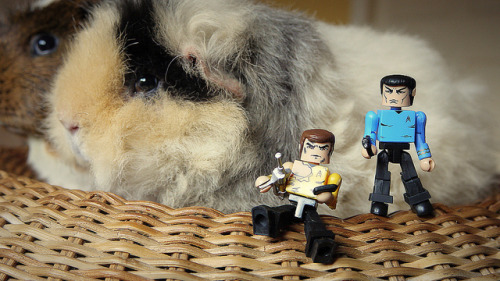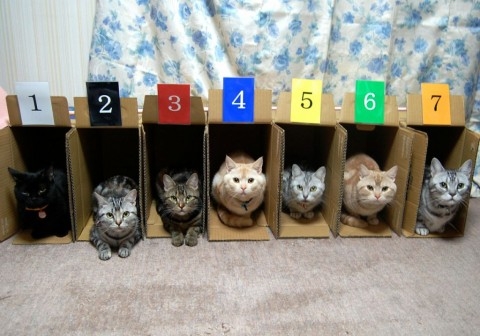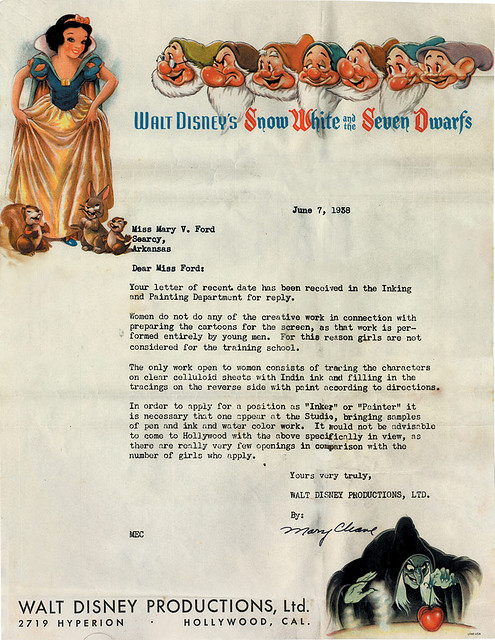![Tiny DSLR at a Tiny Price, Battery Cases, Apps Galore [Deals]](http://img.gawkerassets.com/img/199whmzmkw7eujpg/ku-xlarge.jpg)
The Canon EOS SL1 won a lot of fans for packing the venerable T4i into a smaller package, and now you can get it for an appropriately shrunk-down price. Amazon has the body only today for a mere $369, by far the lowest price ever. And if you want two kit lenses and a few other accessories, Target will sell you a bundle for essentially $500 after you factor in a $150 gift card. Both deals are great, and neither will last very long.
Canon EOS Rebel SL1 (Body Only) | $369
Canon EOS Rebel SL1 (Two Kit Lenses + Accessories) | $650 + $150 Target Gift Card
Admit it, there have been plenty of times you would pay $25 for an extra charge on your smartphone. Luckily, Best Buy today is selling LifeCHARGE battery cases for the Galaxy S4, Galaxy SIII, iPhone 5/5s, and iPhone 4/4s today for $25 a pop.
LifeCHARGE Battery Cases | $25
![Tiny DSLR at a Tiny Price, Battery Cases, Apps Galore [Deals]](http://img.gawkerassets.com/img/199sq1n52zpcpjpg/ku-xlarge.jpg)
The Logitech K400 wireless keyboard/trackpad combo has everything you need to control your home theater PC from a distance. It's a no-brainer at $20.
Logitech K400 Keyboard/Trackpad | $20
![Tiny DSLR at a Tiny Price, Battery Cases, Apps Galore [Deals]](http://img.gawkerassets.com/img/199sqgbx9i9skjpg/ku-xlarge.jpg)
If you're sick of constantly resetting your cheap router, it's a great time to upgrade to the venerable ASUS N66W router. $115 is near the lowest price ever listed for this Wirecutter recommendation.
ASUS RT-N66W Router | $115
![Tiny DSLR at a Tiny Price, Battery Cases, Apps Galore [Deals]](http://img.gawkerassets.com/img/199p3tdt7drtejpg/ku-xlarge.jpg)
Give yourself the gift of a clean mouth with $10 off the Sonicare toothbrush of your choice. Discount taken at checkout.
$10 Off A Sonicare Toothbrush
Apps
iOS
- Bastion ($1) | Normally $5
- Star Wars®: Knights of the Old Republic™ ($5) | Normally $10
- Taasky - Beautiful, simple and easy to use task manager ($1) | Normally $1
- FREE Quick Scan Pro - Barcode Scanner. Deal Finder. Money Saver. | Normally $1
- FREE Chemist | Normally $5 | Chemistry reference
- FREE Priority Matrix | Normally $5 | Task manager for managers
- FREE Priority Matrix for iPhone | Normally $3
- FREE Daedalus Touch – Text Editor for iCloud | Normally $5
- FREE Algodoo | Normally $5 | Physics simulator
- Koder Code Editor ($2) | Normally $6
- FREE Pearl Guitar | Normally $3 | Guitar simulator
- Cubasis - Music Production System ($34) | Normally $50
- Kingdom Rush Frontiers HD ($3) | Normally $5 | Tower defense
- FREE iMuscle Home | Normally $2
- FREE iMuscle Home - iPhone Edition | Normally $1
- FREE ARGUS - Motion and Fitness Tracker by Azumio | Normally $2
- FREE Net Master HD - IT Tools & LAN Scanner | Normally $10
- Flightradar24 Pro ($1) | Normally $3
- Brian Cox's Wonders of the Universe ($5) | Normally $10
- Baldur's Gate: Enhanced Edition ($7) | Normally $10
- Batman Arkham City Lockdown ($1) | Normally $5
- LEGO Harry Potter: Years 5-7 ($1) | Normally $5
- LEGO Harry Potter: Years 1-4 ($1) | Normally $5
- LEGO® The Lord of the Rings™ ($3) | Normally $5
- Man of Steel ($1) | Normally $3
- Man of Steel HD ($1) | Normally $5
- Avengers Origins: Assemble! ($1) | Normally $3/li>
- Avengers Origins: Assemble! ($1) | Normally $3
- The Amazing Spider-Man: An Origin Story ($1) | Normally $3
- Avengers Origins: Hulk ($1) | Normally $3
- Iron Man: Armored Avenger ($1) | Normally $2
- LEGO Batman: DC Super Heroes ($1) | Normally $5
- FREE Lep's World 3 | Normally $1 | Platformer
- FREE Wave Trip | Normally $2 | Music based game
- FREE Max Axe | Normally $2 | Use an axe to find loot
- BLAZING STAR ($1) | Normally $3 | Arcade ship battles
- Aralon: Sword and Shadow HD ($1) | Normally $5 | 3D RPG
- FREE AppZilla 3 | Normally $1 | 150 apps in one
- FREE Ringtonium Pro - unlimited free Christmas tones and New Year ringtones! | Normally $1
- FREE Tower of Fortune 2 | Normally $2 | Retro RPG
- FREE Stickr | Normally $2 | Virtual stickers
- FREE Bouncers Adventures | Normally $1 | Platformer
- FREE Foolproof Art Studio for iPhone | Normally $2
Android
- Final Fantasy III ($8) | Google Play | Normally $15
- Samsung Pro Universal Remote ($39) | Google Play | Normally $49
- Blazing Star ($1) | Google Play | Normally $3 | Arcade ship battles
- Anomaly 2 ($2) | Google Play | Normally $5 | Reverse tower defense
- Call Master Pro Key ($3.50) | Google Play | Normally $7 | Extremely powerful tool to block and reroute calls and texts
- Maps With Me Pro Offline Map ($3) | Google Play | Normally $4
- MoreQuicklyPanel ($1) | Google Play | Normally $2 | Toggle widget
- TinyCam Monitor Pro ($2) | Google Play | Normally $5 | Monitor security cameras
- FREE Allrecipes Dinner Spinner Pro | Amazon | Normally $3
- Star Command ($1) | Amazon | Normally $3 | Kickstarter darling starship manager
- Gangstar Vegas ($1) | Amazon | Normally $3 | GTA clone
- Modern Combat 4: Zero Hour ($1) | Amazon | Normally $7
- The Amazing Spider-Man (Kindle Edition) ($1) | Amazon | Normally $7
Phones, Tablets, and Accessories
- LifeCHARGE Battery Cases for iPhone 5/5s, iPhone 4/4s, Galaxy S4, or Galaxy S3 ($25) | Best Buy | Today Only
- Jabra Solemate Mini Bluetooth Speaker ($70) | Dell
- Plantronics VOYAGER LEGEND Bluetooth Headset ($45) | ebay
External Storage
- Patriot LX Series 32GB Class 10 SDHC Card ($15) | NewEgg | After $5 rebate
- ADATA DashDrive 16GB USB3 Flash Drive ($8) | NewEgg | After $5 rebate
Computers, Networking and Accessories
- Logitech Corded Mouse M500 ($20) | Amazon
- refurb NETGEAR R6300 Wireless AC1750. DD-WRT Open Source support, Dual Band Gigabit Wi-Fi Router ($100) | NewEgg
- NETIS 5-Port Gigabit Ethernet Switch ($10) | NewEgg | Use promo code EMCWVWN74
- TRENDnet Unmanaged 8-Port Gigabit GREENnet Switch ($20) | NewEgg | Use promo code EMCWVWL58
Displays
- Dell 23-Inch LED Backlight LCD Monitor ($130) | NewEgg | Use promo code EMCWVWL29
Computer Parts and Cases
- SAPPHIRE Radeon HD 7770 1GB 128-bit GDDR5 Video Card ($85) | NewEgg | After $15 rebate
- ZOTAC GeForce GTX 650 Ti 1GB 128-bit GDDR5 PCI Express 3.0 x16 HDCP Ready Video Card ($100) | NewEgg | Today Only
- Intel 530 Series 240GB SATA III MLC Internal Solid State Drive ($170) | NewEgg | Use promo code EMCWVWL224
- Gigabyte GA-Z87-D3HP Z87 Motherboard - ATX, LGA1150, Z87 Chipset ($90) | Tiger Direct | After $20 rebate
- APEX MI-008 Black Steel Mini-ITX Tower Computer Case with 250W Power Supply ($30) | NewEgg | After $10 rebate
Tools and DIY
- Dremel 3000-2/28 2 Attachments/28 Accessories Rotary Tool ($59) | Amazon | Lowest price ever
- DEWALT 80-Piece Impact Screwdriver Bit Set with Bag ($20) | Lowes | Excellent reviews
- Hitachi 3.6-Volt 1/4-in Cordless Lithium Ion Screwdriver with Hard Case ($39) | Lowes | Clearance
- Craftsman 13 watt Fluorescent Work Light ($15) | Kmart | Today Only
- Accutire Digital Tire Gauge with LCD Display ($7) | Kmart | Today Only
Home Theater and Audio
TVs and Projectors
- Sceptre 39-Inch LCD 1080p 60Hz HDTV ($239) | Walmart
- LG Electronics 39-Inch LED-lit 1080p 60Hz TV ($348) | Amazon
- Seiki 60" Class 1080p 60Hz LED HDTV ($600) | Sears | Today Only
- Sharp AQUOS 60-Inch LED 1080p 120Hz HDTV ($800) | Best Buy | Today Only
Media Players
- Apple TV ($84) | Staples
Accessories, Speakers, and Headphones
- Panasonic SC-NE1 Compact Wireless Speaker System with Bluetooth ($100) | Amazon | Must choose Amazon as seller
- Klipsch HD300 5.1 Home Theater Speaker System ($170) | Tiger Direct | Use promo code CTF110986
- Logitech G230 Over-the-Ear Gaming Headset ($30) | ebay
- JLab JBuds Diego in-Ear Earbud with Universal Mic ($7) | Amazon
Kitchen and Household
- Coleman 4D XPS LED Duo Lantern ($30) | Amazon | Excellent reviews
- Soft Squeeze Water Filter Bottle, Twin Pack ($14) | Amazon
- Thermos Stainless King 40-Ounce Beverage Bottle ($24) | Amazon
- Hamilton Beach 729 Drink Mixer ($20) | Amazon
- Oster 4093-008 5-Cup Glass Jar 2-Speed Beehive Blender ($40) | Amazon | Lowest price ever
- 7 Color LED Shower Head ($20) | Amazon
- Eureka Quick-up Cordless 2-in-1 Stick Vacuum ($25) | Amazon
- Dyson 24778-05 DC39 Canister Vacuum Cleaner ($205) | Woot | Today Only
Photography
- Canon EOS Rebel SL1 18MP Digital SLR Camera with 18-55mm and 75-300mm Lenses, Memory Card, Bag, and a $150 Gift Card ($650) | Target
- Canon EOS Rebel SL1 Digital SLR Camera Body ($369) | Amazon | Lowest price ever
- Canon EF 40mm f/2.8 STM Pancake Lens ($129) | Adorama | Price updates in cart
- Canon PowerShot N 12.1 MP Super Compact CMOS Digital Camera ($239) | Amazon
Entertainment
Movies & TV
- Bond 50: The Complete 23 Film Collection with Skyfall [Blu-ray] ($100) | Amazon
- Harry Potter: Complete 8-Film Collection [Blu-ray] ($50) | Amazon | Today Only
- Downton Abbey Seasons 1, 2 & 3 Set [Blu-ray] ($40) | Amazon | Today Only
- Godfather Collection [Blu-ray] ($25) | Amazon | Today Only
- The Bank Job + Digital Copy [Blu-ray] ($5) | Amazon
- Looney Tunes Golden Collection 1-6 [DVD] ($60) | Amazon | Today Only
- Scooby-Doo, Where Are You!: Complete Series [DVD] ($31) | Amazon | Today Only
- Band of Brothers [DVD] ($20) | Amazon
- The Bible Series [DVD] ($20) | Best Buy | Today Only
- Downton Abbey Seasons 1, 2 & 3 Set [DVD] ($37) | Best Buy | Today Only
Games
- Amazon is having a huge sale on PC and Mac game downloads
- Transformers Prime Beast Hunters Apex Hunter Armor Suit with Breakdown Figure ($11) | Amazon
- Transformers Generations Fall of Cybertron Series 1 Soundblaster Figure 6.5 Inches ($7) | Amazon
- Funko POP Game of Thrones: Arya Stark Vinyl Figure ($5) | Amazon
- Turbofrog AirVolt 24-Inch 3-Channel R/C Helicopter ($50) | Tiger Direct
Toys
- Pandemic Board Game ($22) | Amazon | Excellent reviews
Grab Bag
- New Balance 860 Men's Running Shoes ($35) | JoesNewBalance | Today Only
- Today Only - Amazon is Offering Up To 60% Off a Large Selection of Jewelry and Watches
This post is brought to you by the Commerce Team, a dedicated group of deal hunters and product enthusiasts. We operate independently of Editorial to bring you the best bargains every day, share our favorite products with you, and ask you about yours. When you buy something we recommend, we may also get a small share of the sale. We welcome your questions and want your feedback.
Follow us for the best deals on the internet, curated for @lifehacker readers.
— Lifehacker Deals (@LifehackerDeals) December 10, 2013
Get in touch with me on Twitter or by emailing shep@gawker.
— Shep McAllister (@shepmcallister) December 10, 2013
![Tiny DSLR at a Tiny Price, Battery Cases, Apps Galore [Deals]](http://img.gawkerassets.com/img/199wap2dmuwprjpg/ku-xlarge.jpg)


































